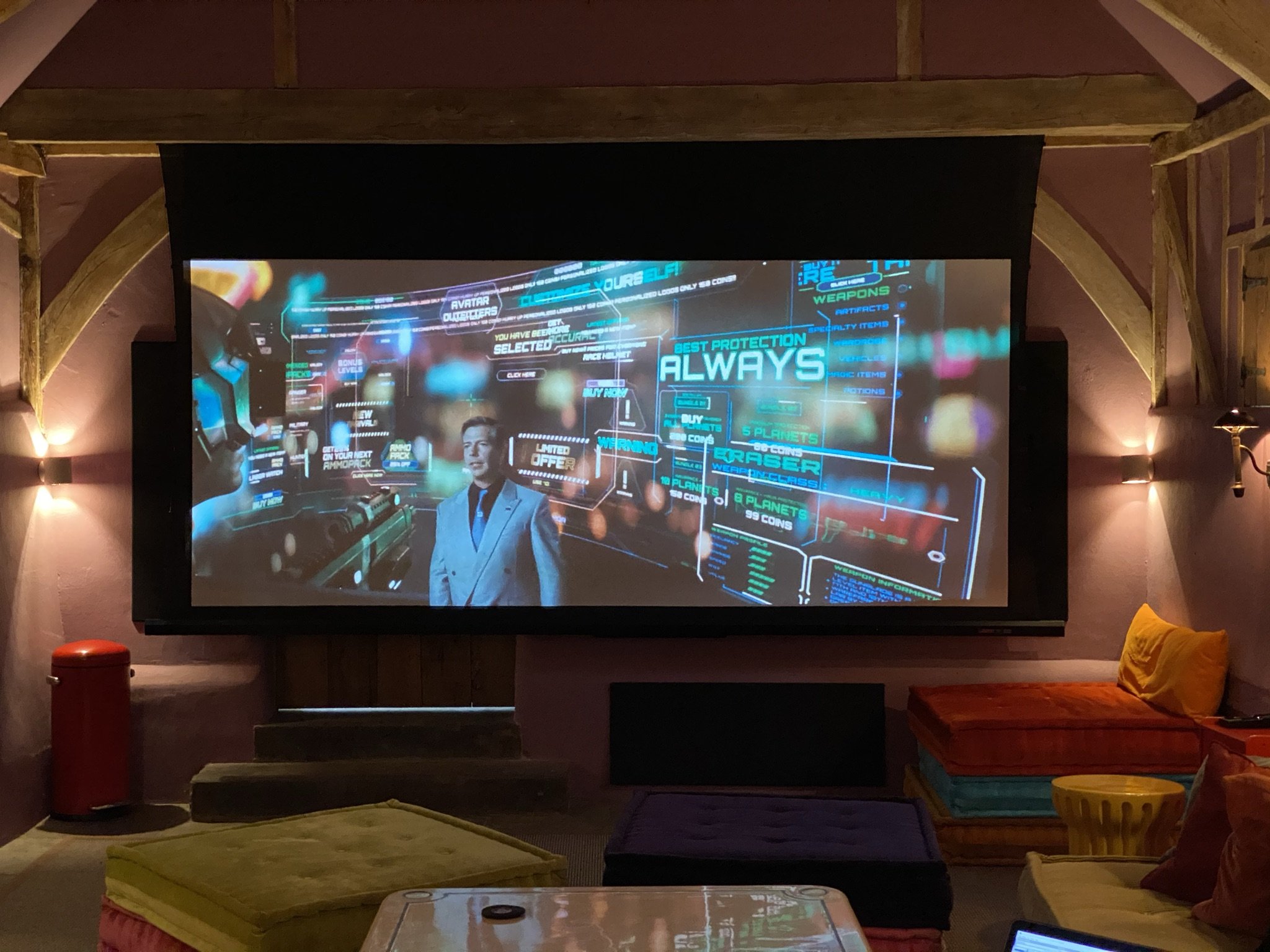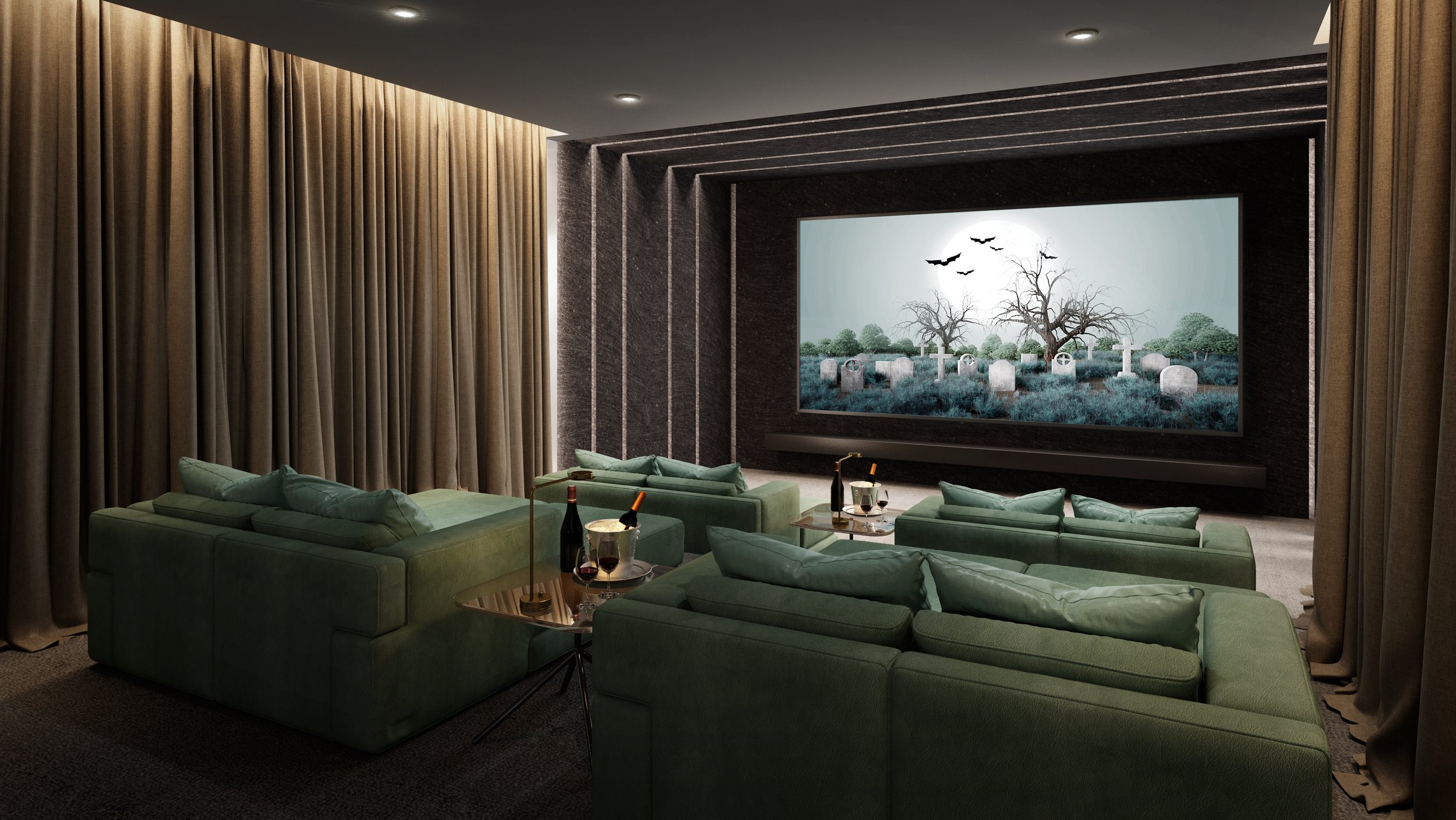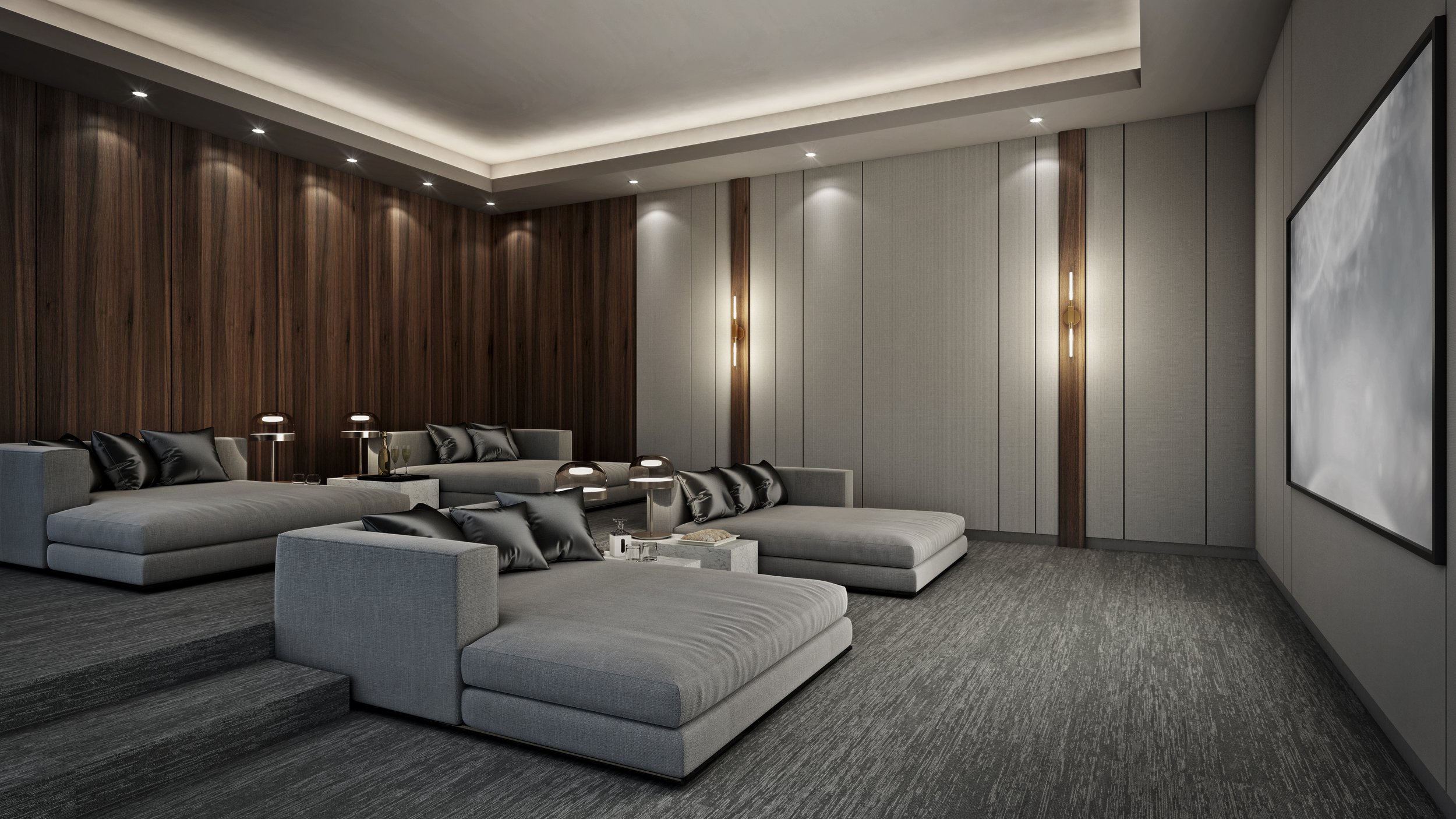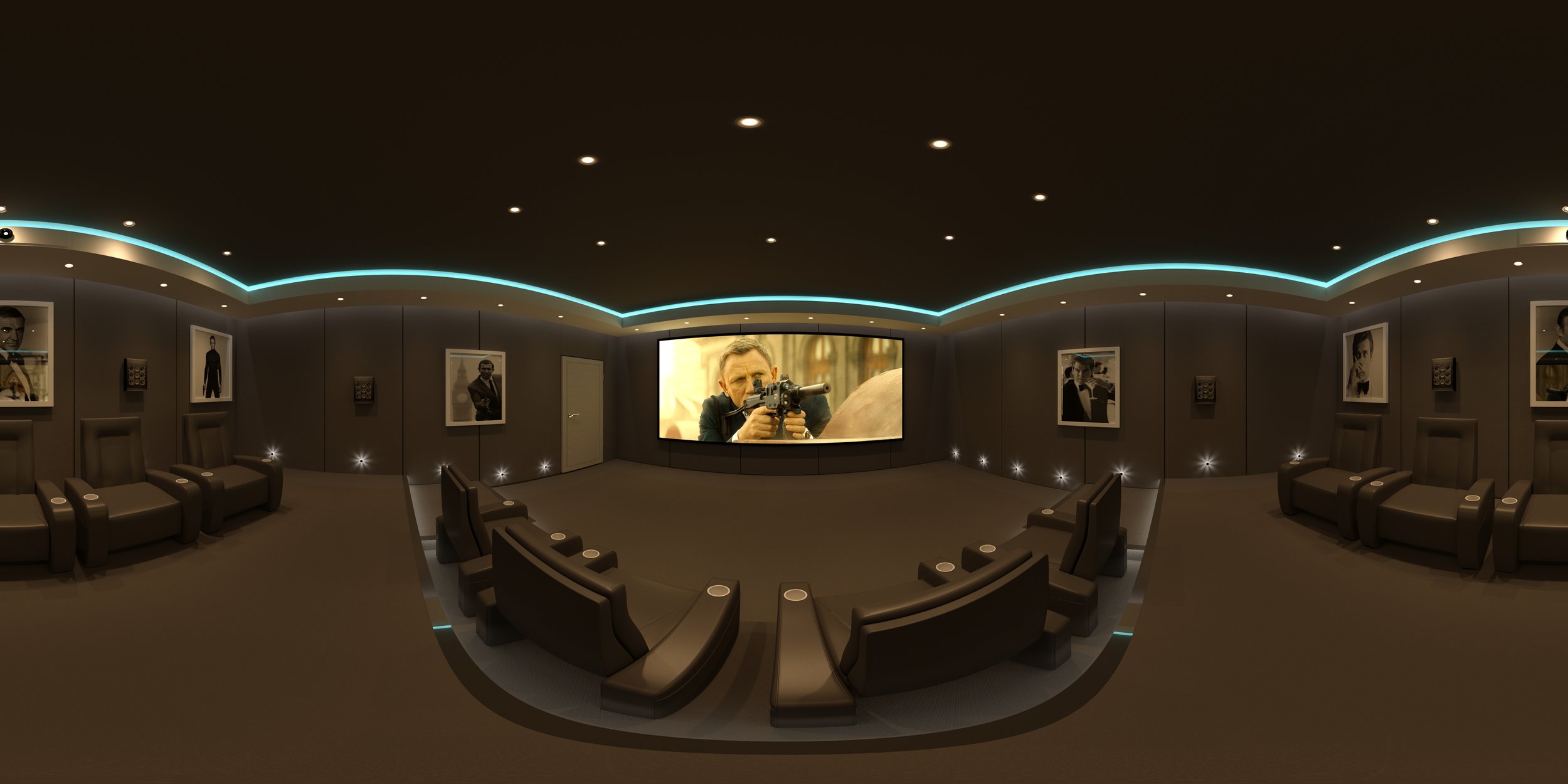
Home Cinema & Media Rooms
Media Rooms
Do you want the ultimate cinematic experience but lack the space for a dedicated room? then a Media Room is the perfect compromise. Allowing your living space to deliver the same truly immersive experience whilst keeping with the design aesthetics of a peaceful living room. With numerous options available get in touch today to find out more!
It is a common misconception that a Home Cinema requires a considerable amount of space, requiring a large room to accommodate, this simply isn’t the case. We can transform a spare bedroom, unused garage or out grown playroom into the Home Cinema of your dreams.
Home Cinema
At Cinergy we create an unrivalled Cinema experience, there is no better way to switch off from the stresses of the world than in your own dedicated Cinema room. Watching your favourite movie’s in the comfort and privacy of your own home, surrounded by family or friends. Using the latest cutting edge tech such as laser projection and Dolby Atmos, we take control of the whole installation process including acoustics, design and seating from concept through to construction.
Cinema Design
-

Speaker Positions
How many speakers should I have and where should they be located?
Although there are numerous standards, the most common speaker configurations are based on formats from Dolby & DTS. Speaker positions play a vital role in your listening experience, less can be more in this scenario. Dolby and DTS have recommended speaker positions for all their formats, using their guidelines we are able to calculate the correct speaker quantity & placement using the main listening position as our reference point.
It is better to have less speakers in the correct positions, rather than overloading the room with numerous speakers in the wrong locations. Room shape/size, budget and seating positions all play a equally important part in the design process.
-
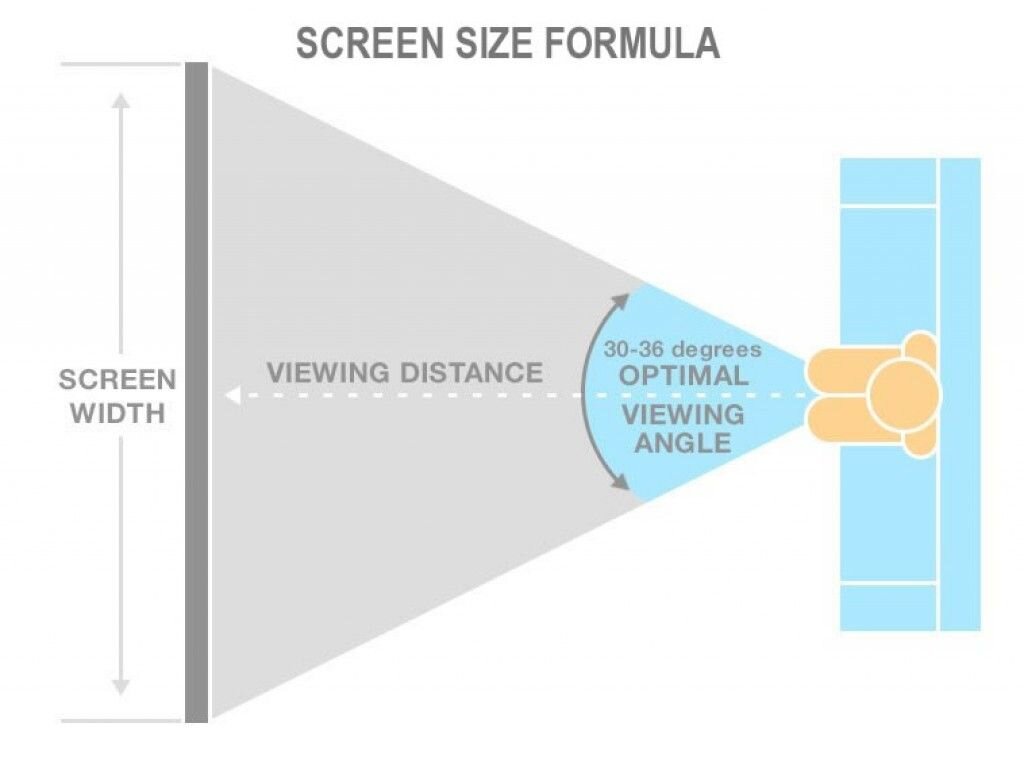
Viewing Angle
Let’s start with viewing distance. As you move closer to the screen, it fills more of your field of view. If you sit too far away, you can be easily distracted by things around the screen, and you probably can’t perceive all the detail in the image. If you sit too close, you’ll need to turn your head back and forth to see everything on the screen. The amount of your field of view occupied by a screen is called the viewing angle.
How much of your field of view should the screen fill? According to the Society of Motion Picture and Television Engineers (SMPTE), the viewing angle should be at least 30 degrees. According to THX, the ideal viewing angle is 40 degrees, the minimum recommended angle is 36 degrees, and the minimum acceptable angle is 26 degrees. These viewing angles translate into recommended viewing distances for screens of a given size and shape—the larger the viewing angle, the shorter the viewing distance.
-

Acoustic Treatment
Why are acoustic treatments essential?
Acoustics is all about minimizing reflections. Sound covers a broad spectrum of frequencies from the lowest bass rumbles to the highest sparkling high hat, the all-important human voice falls somewhere in the middle.
In a Home Cinema we are aiming for an RT60 time of between 0.3-0.6 seconds, what is RT60?
RT60 defines the amount of time it takes an impulse sound at a given frequency to decay by 60 dB. By targeting the three R’s (Resonance, Reverberation & Reflections) with different kinds of absorption and reflection treatments we can improve this time. What we’re really trying to do is eliminate the chance of sound bouncing off walls and windows and reflecting back at us, competing with other sounds.
When these treatments are used you get a more enriched experience with crisper more accurate sound, you can truly lose yourself in.
-

Aspect Ratio/Screen Shape
Something that is often overlooked but is an essential design consideration is the aspect ratio of your screen. An aspect ratio describes the width and height of a screen or image, it consists of two numbers separated by a colon. The first number denoting the image’s width and the second its height. For example, an aspect ratio of 1.33:1 means the image's width is 1.33 times the size of its height. The two most common aspect ratios being 2.35:1 (Cinemascope) and 1.78:1 (16:9), although Directors use a variety of ratios between these.
It is important for us to understand what content will be viewed, so that we can recommend the correct shaped screen for your space, will your main use be watching movies or TV? If you love both we have you covered with a masking screen option. Masking systems are used to partially mask or hide the cinema screen creating a sharp definition around the projected image at different aspect ratios, this is a luxury solution giving you the best of both worlds.
-

Light Control
Creating the right ambiance in a cinema room can be difficult when most of our interior design choices are focused on maximizing the light in each of our living spaces. To allow us to truly immerse ourselves in that cinematic experience we have to put in place extensive countermeasures such as blackout shading, lighting control, dark colours, and reflective surface reduction, this all helps to combat unwanted light pollution.
-

Seating
Is there anything more luxurious than relaxing and reclining in your own custom-made cinema seating? Our seating options boast an extensive range of styles and fabric choices to complement any design.
We can even integrate them into your Control4 system, recalling your favourite pre-set or folding away in a click of a button.
Calibration
There's more to getting the Home Cinema of your dreams than piecing together a bunch of equipment. Calibration means to measure and precisely adjust against a known standard. Calibration is the final step that makes your Home Cinema perform the way it should. Our calibrations are carried out to ISF (Image Science Foundation) and HAA (Home Acoustics Alliance) standards.
Audio
Audio Calibration can compensate for variations in the equipment itself and probably more importantly for environmental factors. The chief environmental factor that can influence your Home Cinema performance is the room itself. Some of the most important factors that affect the final performance of your Cinema are room acoustics, seating location, speaker placement, and the amount of ambient sound.
The specific calibration process differs depending upon the equipment you've chosen to incorporate. The desired result, however, is the same. You'll have accurate frequency response, good dialogue intelligibility, and tight, powerful bass.
Video
When Movies or TV shows are made, video content is carefully edited on calibrated monitors to produce accurate consistent colours based on a variety of standards. By making adjustments to the default configuration of your video display we can deliver a more accurate image that meets these standards. Delivering video content as the Director intended.


